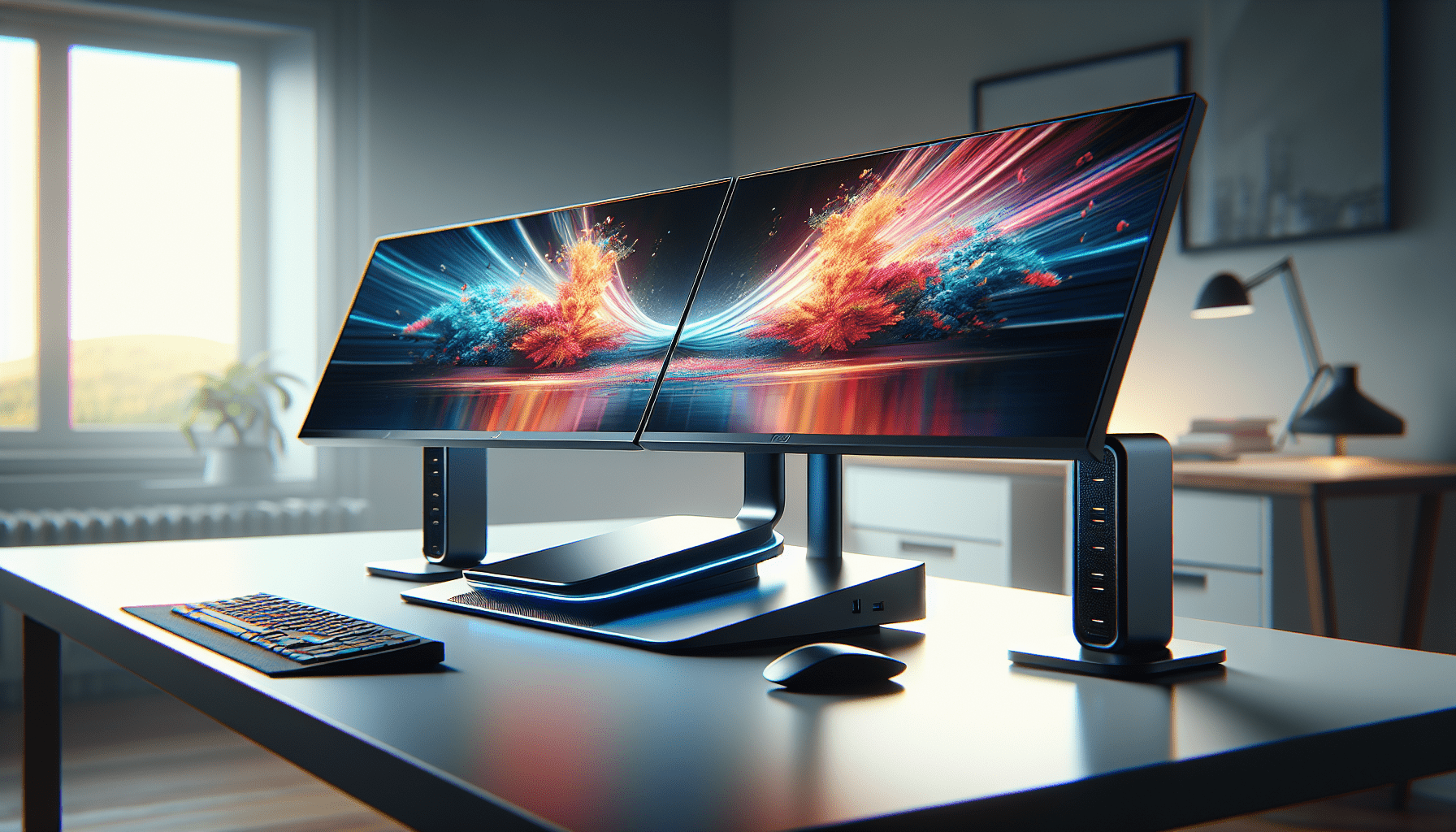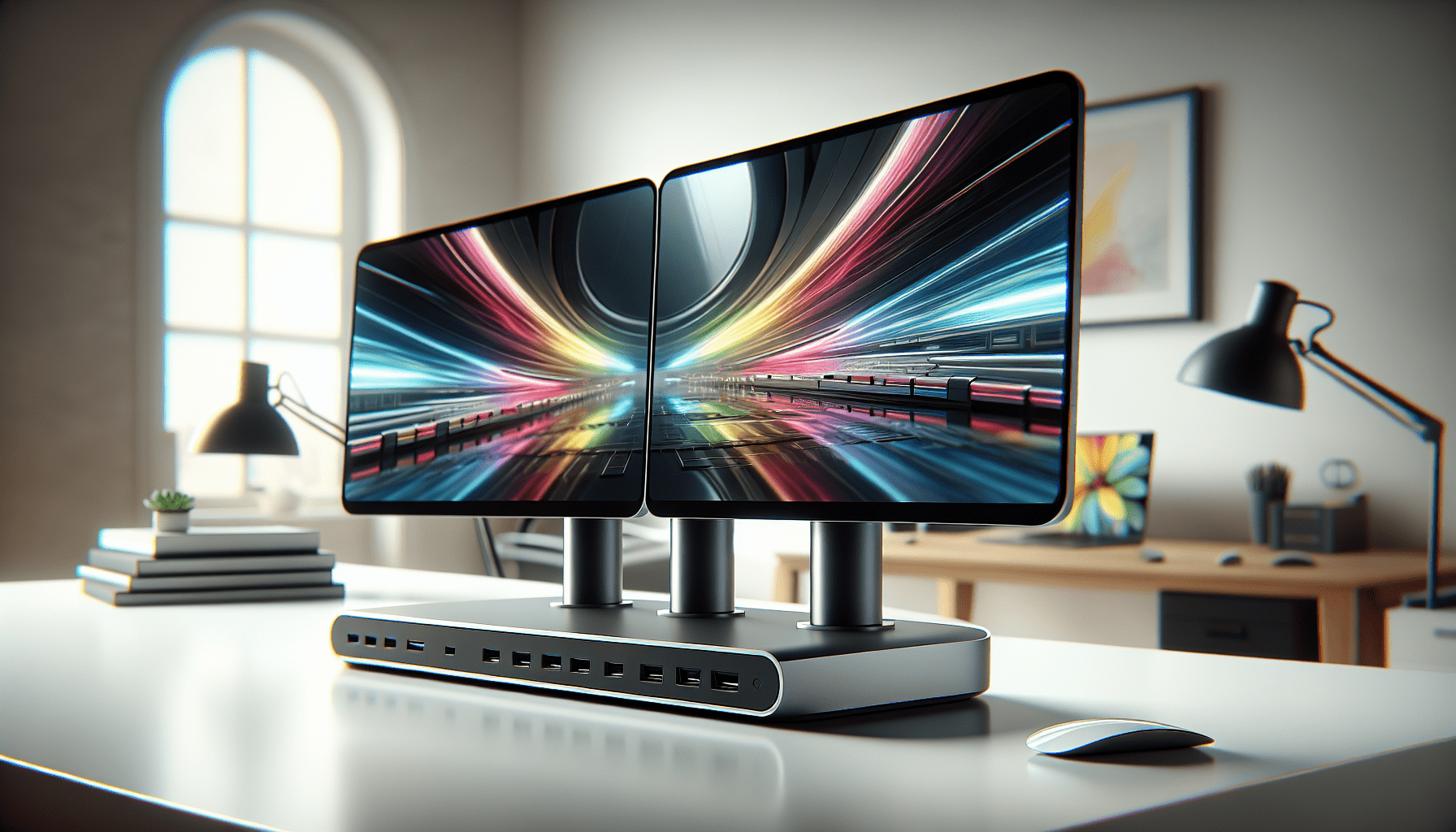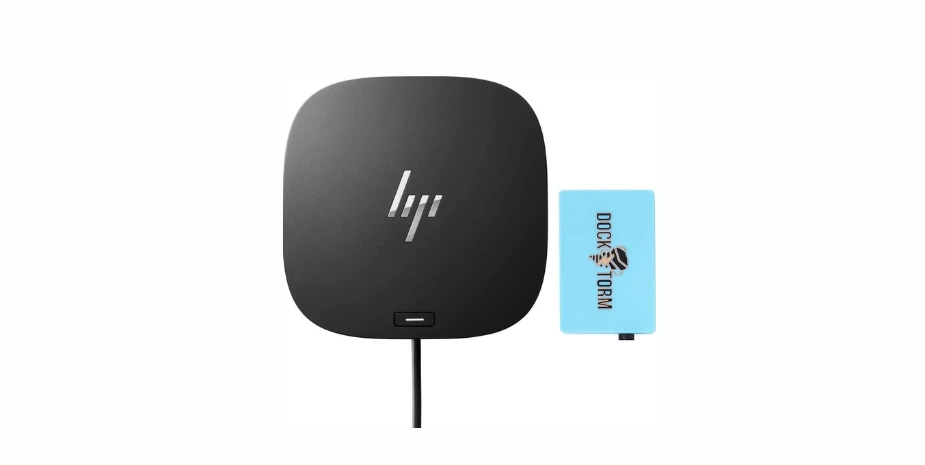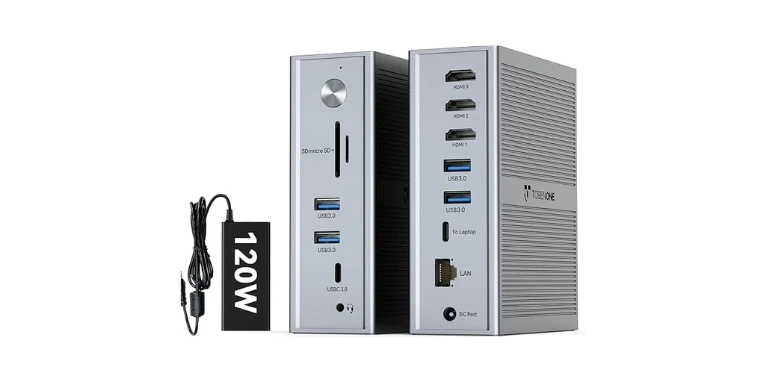Have you ever found yourself wishing for a larger computer screen or even multiple screens to organize your tasks better? Well, we have, and we must admit that it’s a game-changer for productivity. When you’re dealing with spreadsheets, writing reports, or maybe just keeping one eye on your playlist, having those extra screens can make life so much smoother. But how do we set up three monitors when our laptops or desktops stubbornly refuse to cooperate? The secret lies in owning a docking station that supports three monitors. Let’s embark on this colorful journey of screens together, and we promise we won’t make it overly technical.
Understanding Docking Stations
Through our fumbles in the world of technology, we’ve come to understand that a docking station is like a magical bridge. It transforms our device from a simple laptop or desktop into a complete workstation. With a trusty docking station, we can often connect multiple peripherals—think keyboards, mice, even printers! But what we’re truly interested in is that golden opportunity to connect three, yes three, monitors.
The Role of Docking Stations
Docking stations serve as a central hub for your device. They’re designed to expand your computer’s connectivity, offering additional ports to attach all those spectacular peripherals. For example, if your laptop comes with only two USB-C ports, a docking station could give you several extra USB ports, HDMI outputs, and even an Ethernet plug. These stations bridge the gap between convenience and functionality, turning your single-screen setup into a multi-display marvel.
Why Set Up Multiple Monitors?
Before we went on our three-screen wonderland adventure, we often wondered: why do we really need three monitors? But soon we realized the benefits weren’t merely operational or purely for flexing—the real magic showed in our productivity and workspace management. Multiple monitors allow us to open a different application on each screen. This setup can so seamlessly support a smooth transition between tasks that you feel like a digital maestro conducting a symphony of applications.
Types of Docking Stations
Now that we’ve dipped our toes into the world of docking stations, let’s dive deeper to understand the different types available. In our experience, all docking stations are not created equal. They come with their own set of specs and limitations.
USB-C Docking Stations
These are the most common docking stations you’ll find these days. They connect via a USB-C or Thunderbolt 3 port, offering high-speed data transfer rates. With these, you’ll often find several USB ports, HDMI, DisplayPort, and sometimes even an SD card reader. They’re excellent for new laptops that primarily rely on USB-C connections.
Thunderbolt Docking Stations
In our experience, Thunderbolt docking stations are the heavy lifters of the docking world. They connect via a Thunderbolt 3 or 4 port, providing unmatched data transfer speeds and the capability to support multiple high-resolution displays. If you’re seeking multi-monitor support with the least fuss, these stations might just win you over.
Traditional USB Docking Stations
For those among us who are still hanging onto older laptops, traditional USB docking stations can come in handy. By connecting through a USB-A port, they offer additional connectivity, although they might lack the speed and flexibility of their USB-C and Thunderbolt cousins.

Features to Consider
While embarking on our quest for the perfect docking station to support three monitors, we realized a few key features could either make or break the experience.
Compatibility
Here’s a tip we learned the hard way: always, always check the manufacturer’s compatibility list before making a purchase. Not all docking stations support all devices, especially when it comes to macOS laptops, which can be quite finicky.
Port Availability
In our quest for monitor expansion, ports are everything. Take a second look at the number and types of ports offered by the docking station. Ideally, you’ll want multiple video output options like HDMI or DisplayPort along with extra USB ports for your peripherals.
Power Delivery
Power delivery is an essential feature for docking stations, especially if you’re hooking up a power-hungry laptop. Some docks can charge your laptop while being connected, which means you won’t have to juggle between charging and working, offering a smooth, uninterrupted workflow.
Resolution and Refresh Rate
Do you dream of watching your cat videos in the sharpest resolution possible? So do we! Be aware of the maximum resolution and refresh rate that the docking station can support. This factor becomes crucial when gaming or engaging in graphic design work.
Our Favorite Docking Stations for Three Monitors
Enough theory; let’s explore some actual docking stations that have won our hearts and desks over, supporting a three-monitor setup flawlessly.
| Docking Station | Connection Type | Number of Supported Monitors | Resolution Support | Key Features |
|---|---|---|---|---|
| Plugable UD-6950Z | USB 3.0 | 3 | Up to 4K with DisplayLink | Dual HDMI ports, power pass-through |
| CalDigit TS3 Plus | Thunderbolt 3 | 3 | Up to 5K on one and 4K on others | Gigabit Ethernet, SD card reader, high-speed data transfer |
| Kensington SD5700T | Thunderbolt 4 | 3 | Up to Dual 4K monitors | 11 ports, including an SD card reader |
| Dell D3100 | USB 3.0 | 3 | Supports Full HD | Affordable, good for non-demanding tasks |
| DockCase Explorer | USB-C | 3 | Full HD | Lightweight, with varied ports, great for travel |

Setting Up Your Docking Station
Assuming you’ve settled on your docking station, let’s now indulge in the process of actually setting it all up. A drink might be in order for this. Whether it’s coffee or herbal tea, we’ll walk through this gadget drama step by step.
Preparing Your Workspace
To properly station your docking setup, take a few moments to visualize how you want to arrange the monitors. Consider the layout that best fits your work style; do you prefer side-by-side, or perhaps an arc formation?
Connecting the Dock
Once the soul-searching arrangement is completed, it’s time to connect the docking station. Find the rightful port on your laptop or desktop—if it’s a USB-C or Thunderbolt connector, fantastic; if it’s an older model with USB-A, fear not.
Hooking Up the Monitors
After connecting the docking station, move on to connect your monitors. Use HDMI, DisplayPort, or whatever your chic setup demands. This is where the magic unfolds. Place them by our envisioned layout, adjust the settings, and oh, do ensure those pesky cables are managed!
Adjusting Display Settings
Your docking journey doesn’t end with just plugging things in. Navigate to your operating system’s display settings to adjust the arrangement, resolution, and orientation of your monitors to your liking. This is the step where each screen becomes your personal playground.
Troubleshooting Common Issues
Before we set you free to explore those endless digital landscapes, let’s discuss a few hiccups we might encounter. Because, let’s face it, the road to multi-monitor bliss isn’t always free of speed bumps.
Monitors Not Detected
If one of your monitors seems to be giving you the cold shoulder and refuses to be detected, check the cables first. A gentle prod usually does the trick. Should that fail, double-check the docking station’s drivers; sometimes they’re the real culprits.
Poor Display Quality
Every so often, the vibrant colors we’re expecting feel muted, like a rain cloud on our digital horizon. To fix this, ensure your cables are up to the task. High-quality HDMI or DisplayPort cables can solve many a display woe.
Frequent Disconnections
A monitor with separation anxiety can be troublesome. Often, it’s a loose cable or connection at the heart of these momentary disconnections. If that’s not it, an update in the docking station firmware might be on the cards.
The Future of Docking Stations
As tech continues to evolve, so do our dear docking stations. We’re seeing trends toward more wireless solutions and even more power-packed Thunderbolt and USB standards, which means those of us glued to our screens in admiration will continue to have better and more efficient options.
Wireless Docking
The idea of a wireless docking station feels like the realm of sci-fi, doesn’t it? But it’s inching closer to reality. The convenience of ditching cables even in a multi-monitor setup would indeed be a sight to behold.
Enhanced Connectivity
Each new generation of docking stations brings with it more ports and faster data rates. For us, this means more flexibility, more productivity, and definitely more screens. The future seems pretty screen-tastic.
Conclusion
We hope that through our shared journey into the realm of docking stations that support three monitors, you’ve found the answers you were seeking. Connecting those three glorious screens is more accessible than ever, and now, armed with the right tools, your workspace transformation awaits. So, shall we embrace this wondrous digital land where productivity and creativity intertwine, and savor every meticulously arranged pixel on our expanded screens? Let the multi-monitor adventures begin!



